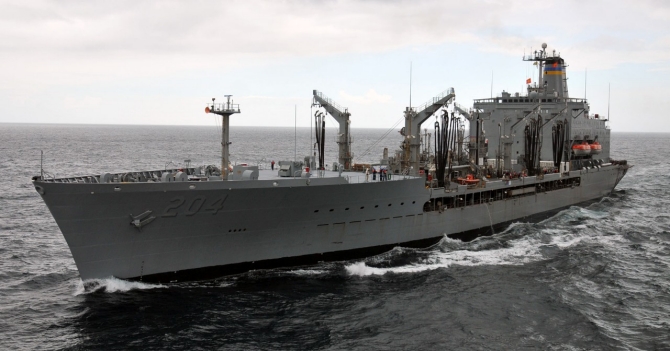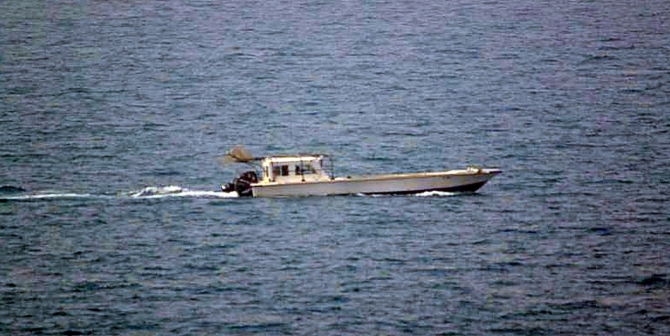Rappahannock II (T-AO-204)
1995–

II
(T-AO-204: displacement 9,500; length 677'; beam 97'; draft 35'; speed 20 knots; complement 103; armament 1 .50-caliber machine gun, 2 20 millimeter Phalanx CIWS; class Henry J. Kaiser)
The secondRappahannock -- the eighteenth and final ship of the Henry J. Kaiser class -- was laid down at New Orleans, La., by Avondale Shipyard, Inc., on 29 March 1992 and launched on 14 January 1995. Sponsored by Mrs. Vicky Kennedy, wife of Senator Edward Kennedy, she was one of only three of the eighteen Henry J. Kaiser-class ships - the other two being Patuxent and Laramie - to be built with a double bottom in order to meet the requirements of the Oil Pollution Act of 1990. Hull separation is 6 feet at the sides and 6 feet 6 inches on the bottom, reducing her liquid cargo capacity by about 21,000 barrels (3,300 m3) from that of the 15 ships of her class without a double bottom.
Rappahannock entered non-commissioned U.S. Navy service under the control of Military Sealift Command with a primarily civilian crew on 7 November 1995 and serves in the U.S. Pacific Fleet.
During Operation Tomodachi, Rappahannock delivered fuel, stores and humanitarian relief supplies to Blue Ridge for transport to mainland Japan. Rappahannock then loaded diesel and aviation fuel at Sasebo, Japan, on 24 March before sailing for Gwangyang, South Korea, arriving 27 March. There, Rappahannock loaded 289 pallets of bottled water, which the ship delivered to Yokosuka, Japan, 30 March. Less than 24 hours later, the ship was underway again in the direction of Sendai. Rappahannock completed 10 underway replenishment missions delivering more than 2.4 million gallons of fuel.
On 16 July 2012, Rappahannock was involved in an incident in the Persian Gulf off the coast of Dubai with an Indian fishing boat that approached the ship despite several warnings. She followed her force protocol by first attempting to warn away the approaching craft with a series of non-lethal procedures using voice, radio, and lights. After those failed, Rappahannock escalated to lethal force, firing on the approaching vessel with a .50-caliber machine gun, killing an Indian fisherman onboard and wounding three others.

Detailed history under construction.
Paul J. Marcello
5 November 2015


